|
Work had really started
heating up in January, and I wasn't getting much time to do photography.
What time I had in the field was fairly uneventful. I had made
a trip on Sunday the 9th to a snowy Maplewood, but found very
little bird activity. I had also snuck away on the morning of
the 12th to Mud Bay, where a Eurasian Skylark had been reported.
I returned without sighting the skylark or getting any decent
photos of anything. On top of that, Mud Bay turned out to be an
aptly-named destination, and I was happy to have my calf-high
rubber boots on, although even they didn't help when I sunk in
up to my knee. So I worked that afternoon with a few inches of
mud caked around the knee of my jeans. I'm glad I didn't have
any important meetings.
So the next day that
I really got in the photo groove was Saturday the 15th. I decided
to head up to Brackendale, a small community abutting Squamish.
Brackendale is well-known for its Bald Eagles. They gather there
in the winter to feast on the spawning salmon.
I arrived in Squamish
around lunchtime and decided to eat before going to see the eagles.
I called my friends Grant and Marcia, who had taken us around
Squamish in November. Marcia was out of town, but Grant was free
and after I finished eating we went over to Brackendale together.
The famous eagle-watching place, Eagle Run, was pretty quiet.
Only three eagles were there when we got there, and they were
all far away, across the river. I was beginning to think that
I was going to be cursed with another day of relative lack of
photogenicity. January was not going well.
But Grant knows his
town, and he told me that we would probably do better at eagle-spotting
a little ways up the road, at another river called the Cheakamus.
He drove us on up there, and we got out and started walking a
trail alongside the river. Eagles were everywhere: in the trees
around us, and flying above the river.
It takes four or five
years for a Bald Eagle to reach adult plumage. This bird, with
dark head and dark body, is a juvenile, less than a year old.
|
|
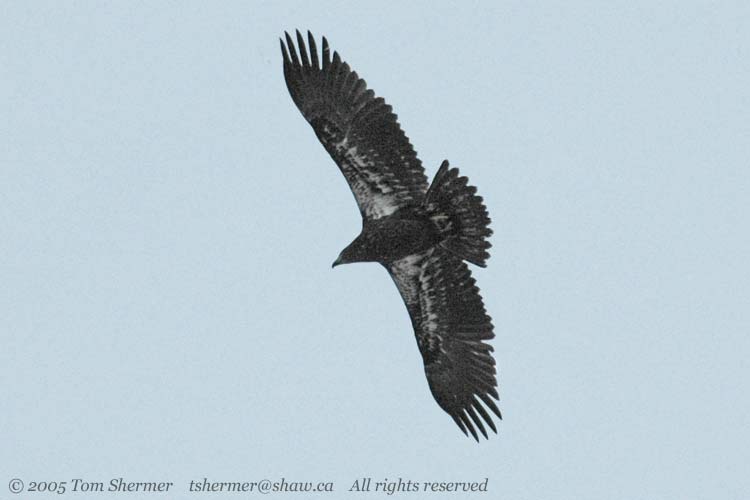 |
| Bald Eagles
don't develop the white head until the fourth year, so this tree
has two older eagles and two younger ones. |
|
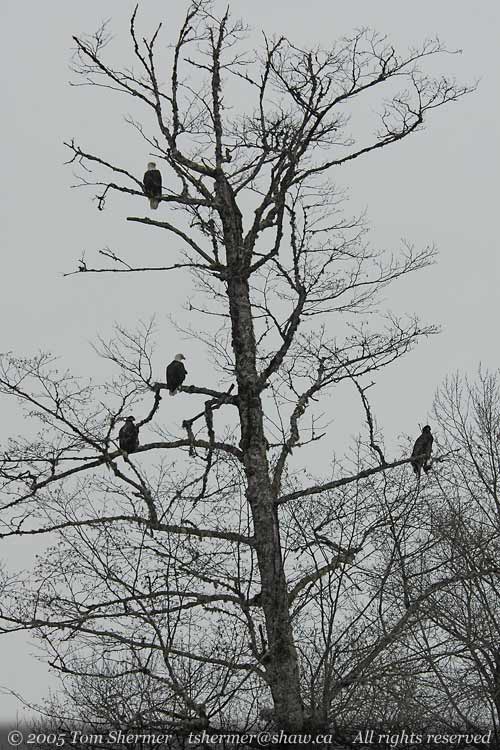 |
|
Some trees just seemed
to be favored by the eagles; the most I counted in a single tree
was nine.
Off to my left, I caught
this juvenile flying out between the trees.
|
|
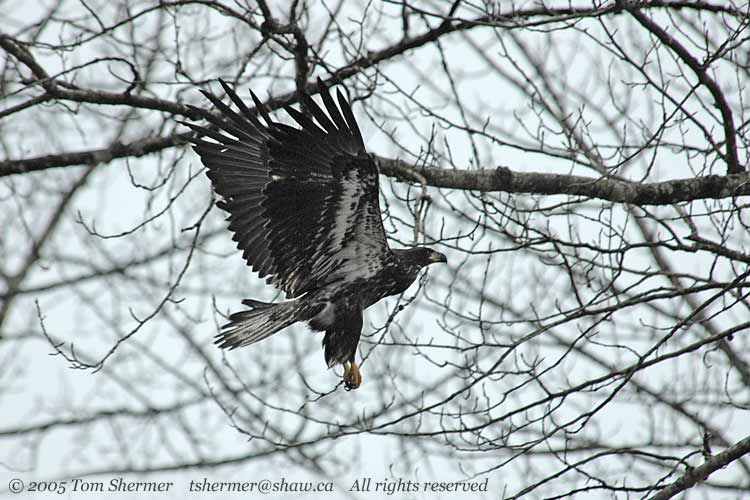 |
| We walked
along the snowy path and came across this individual, who looks
to be a two-year-old. He was rubbing the top and side of his bill
against the branch he was perched on. |
|
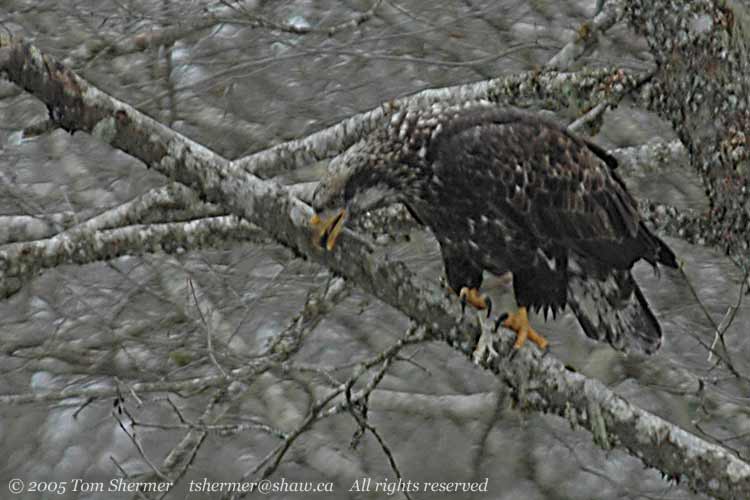 |
|
If my fingers ended
in razor-sharp claws, I probably wouldn't use them to scratch
my nose, either.
As I said earlier,
eagles were everywhere in the trees around us. We were able to
get fairly close (probably about fifteen meters) to some of them
before they flew off. Here's a one-year-old that we were able
to get close to.
|
|
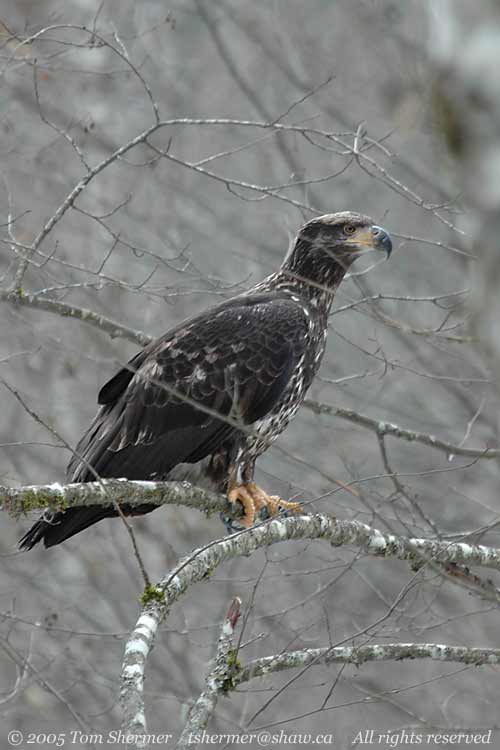 |
| And here's
a similarly-close adult. |
|
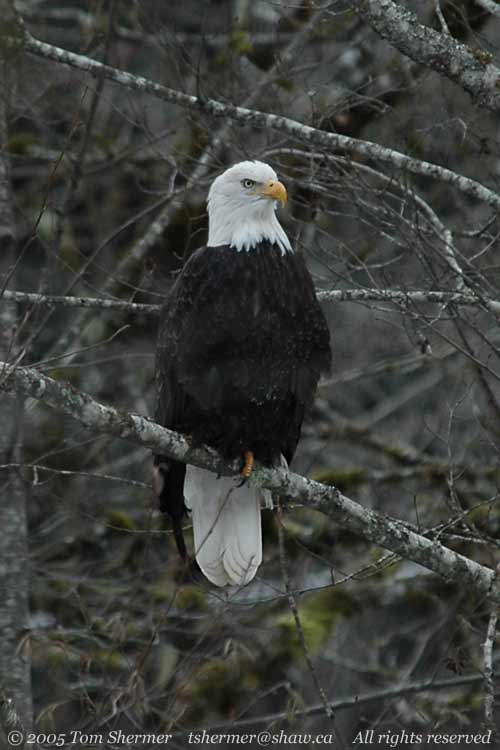 |
| There were
several American Dippers in the river, doing their dipper thing.
This consists of standing in ice-cold running water and sticking
your head in. |
|
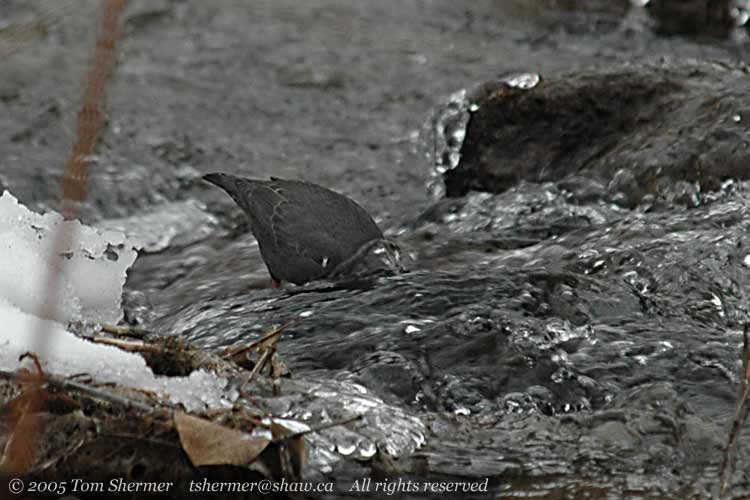 |
|
It seems like a fairly
strange habit, as it must cost the bird a fair amount in heat
loss through the legs. However, the dipper's preferred food is
salmon roe, and sticking your head in seems the best way to find
and retrieve it.
Here he's pulled his
head out again.
|
|
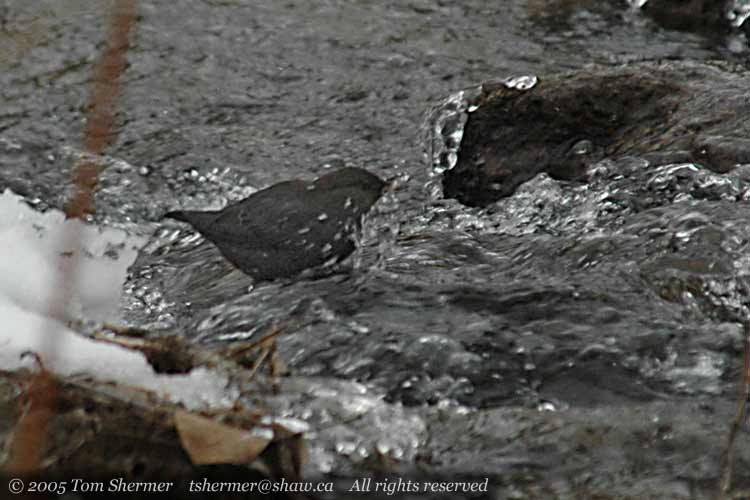 |
|
Dippers will stand
in one place and dip their head in repeatedly. It's fun to watch
them.
We continued on the
path, enjoying the hush of the forest after a snowfall, and seeing
eagles everywhere we looked.
About thirty minutes
after we started out, we turned onto a path a little further from
the river for the return walk. Right where we turned, we found
a Glaucous-winged Gull, who was at point blank range and didn't
mind our presence. I took a few pictures before we headed on.
|
|
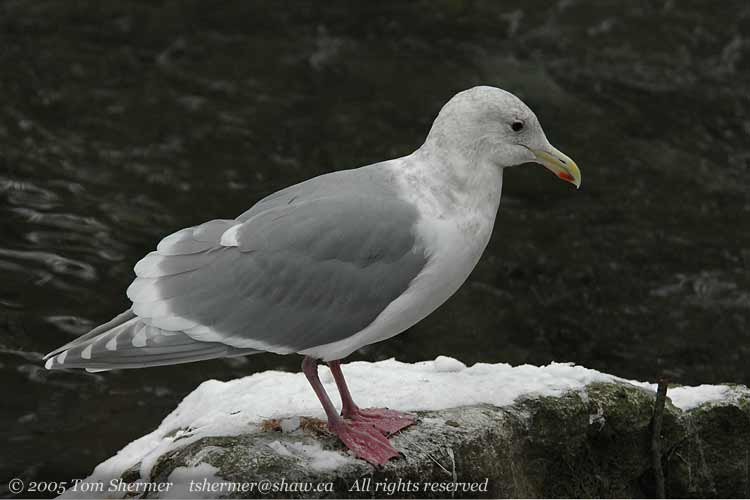 |
|
Note: the next photo
is not for the weak of stomach. The ones after it are okay, though.
The path we were on
wound through some salmon spawning channels. The salmon runs were
pretty much done, and the fish were in a much more advanced state
of decay than when I had been nearby in November.
|
|
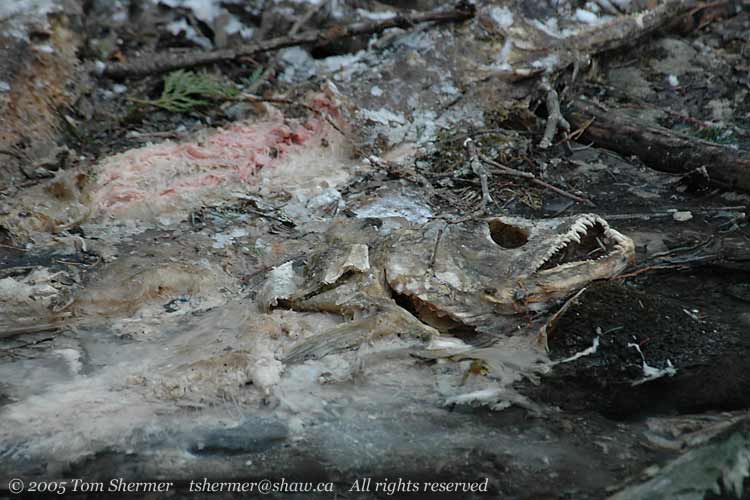 |
|
We went over a small
footbridge back to where we had gotten on the main riverside trail.
There I caught this adult
|
|
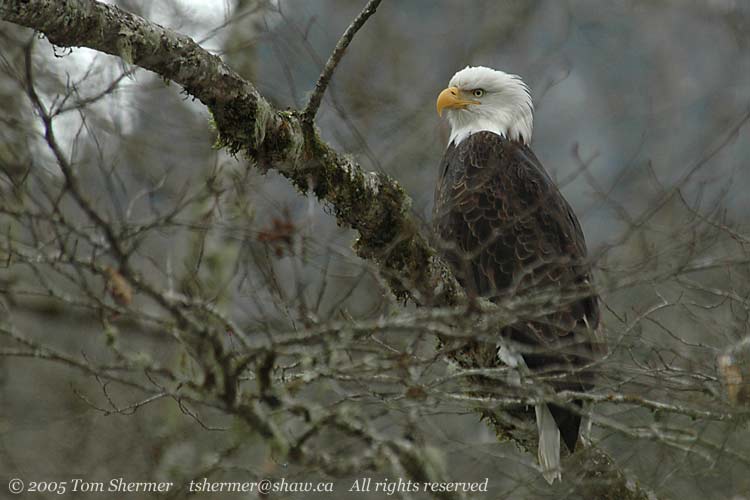 |
|
and this one-year-old.
|
|
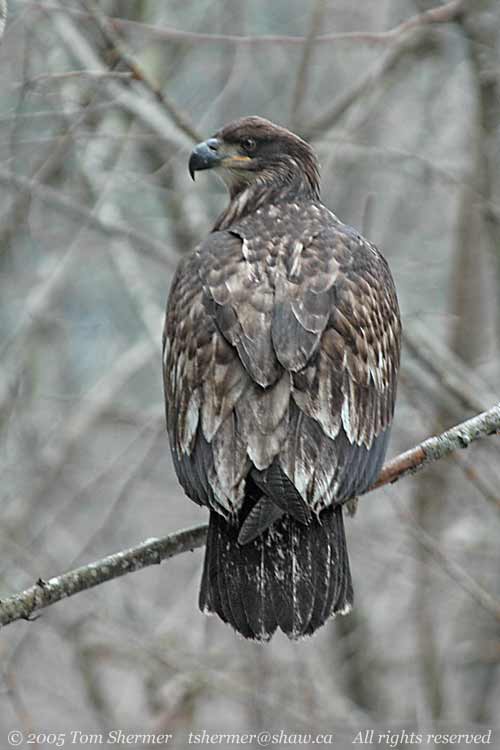 |
| We walked
over the one-lane bridge across the Cheakamus, and came to a place
that overlooked a wide spot in the river. Some gulls were coming
in for a landing, and I watched them as they did. The eagle watched
them, too. |
|
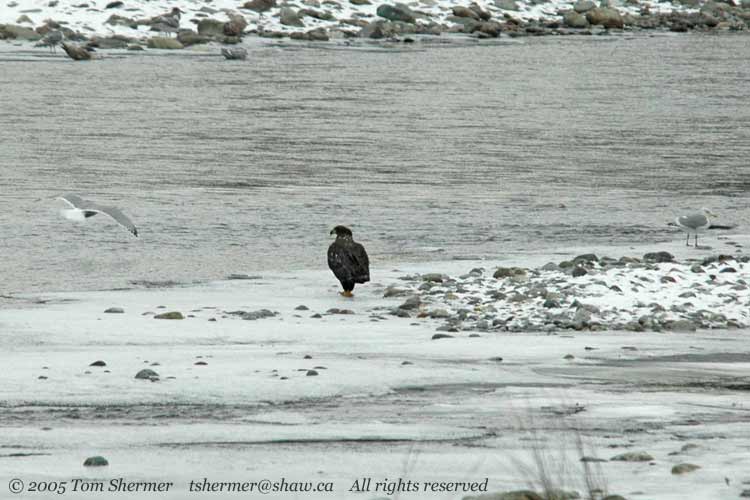 |
|
|
|
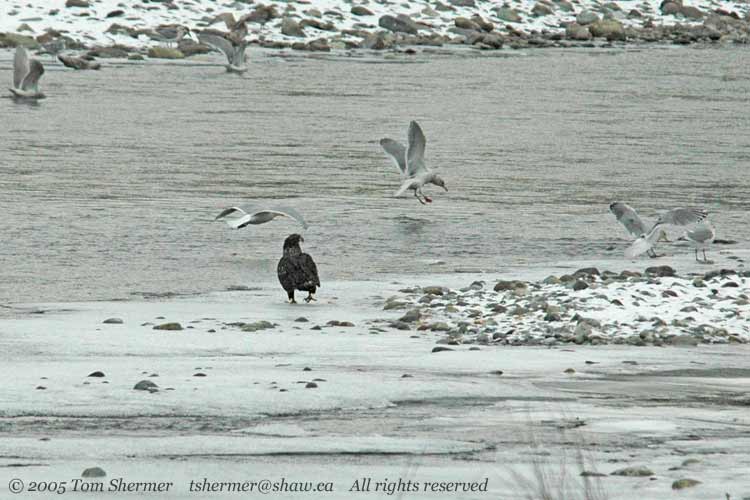 |
|
I guess the gulls weren't
worried about the eagle preying on them—either they're not
very bright, or they figured that the eagle is too full of fish
to worry about prey that can fly.
We walked a little
closer to the gull-watching eagle, and I took a few photos of
another one- or two-year-old perched on a snow-covered log across
the river.
|
|
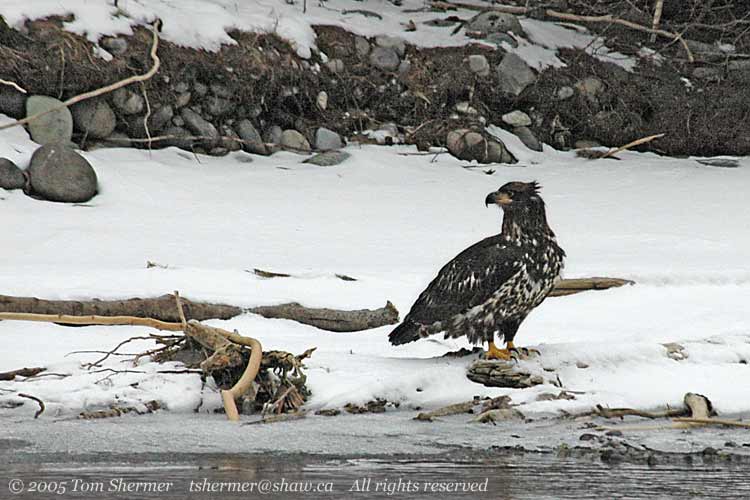 |
|
Before leaving, I had
one more subject. I found the following hind end sticking up out
of the river.
|
|
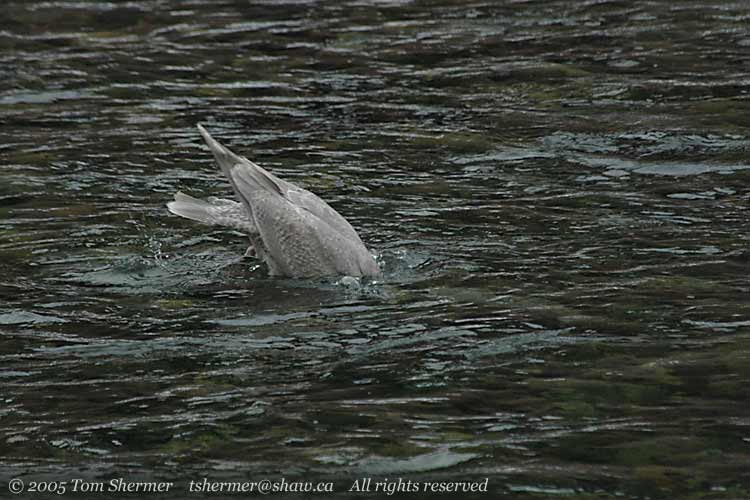 |
|
I kept my eye on that
tail, and soon the rest of a bird joined it. It was a juvenile
gull of some sort, and he'd obviously been taking foraging lessons
from a dipper.
|
|
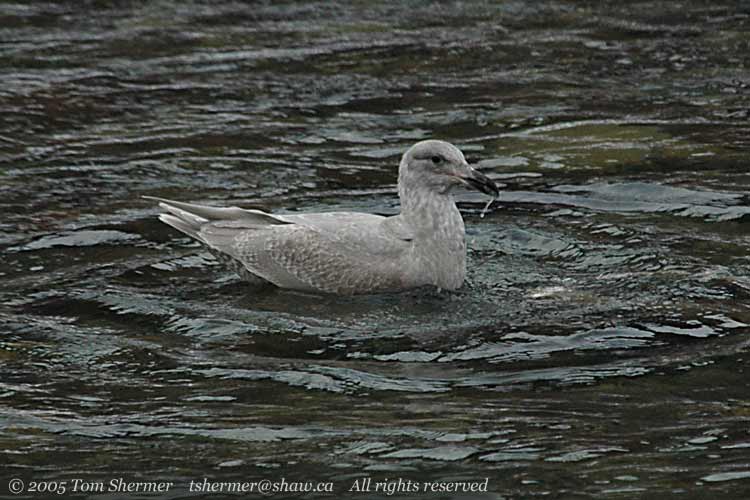 |
|
That wasn't a fish
egg in his mouth, though; he must have adapted the technique to
his own ends. I don't know what it was that he got there.
Grant and I headed
back to his truck, and went on to check a few other places for
interesting birds. We didn't find any, and the light was quickly
fading, so my photography was done for the day. All in all, we'd
probably seen a couple hundred eagles, and a few other goodies
to boot. My trip to see the eagles had turned out quite well.
Smarter than your average
gull,
Tom
|
|